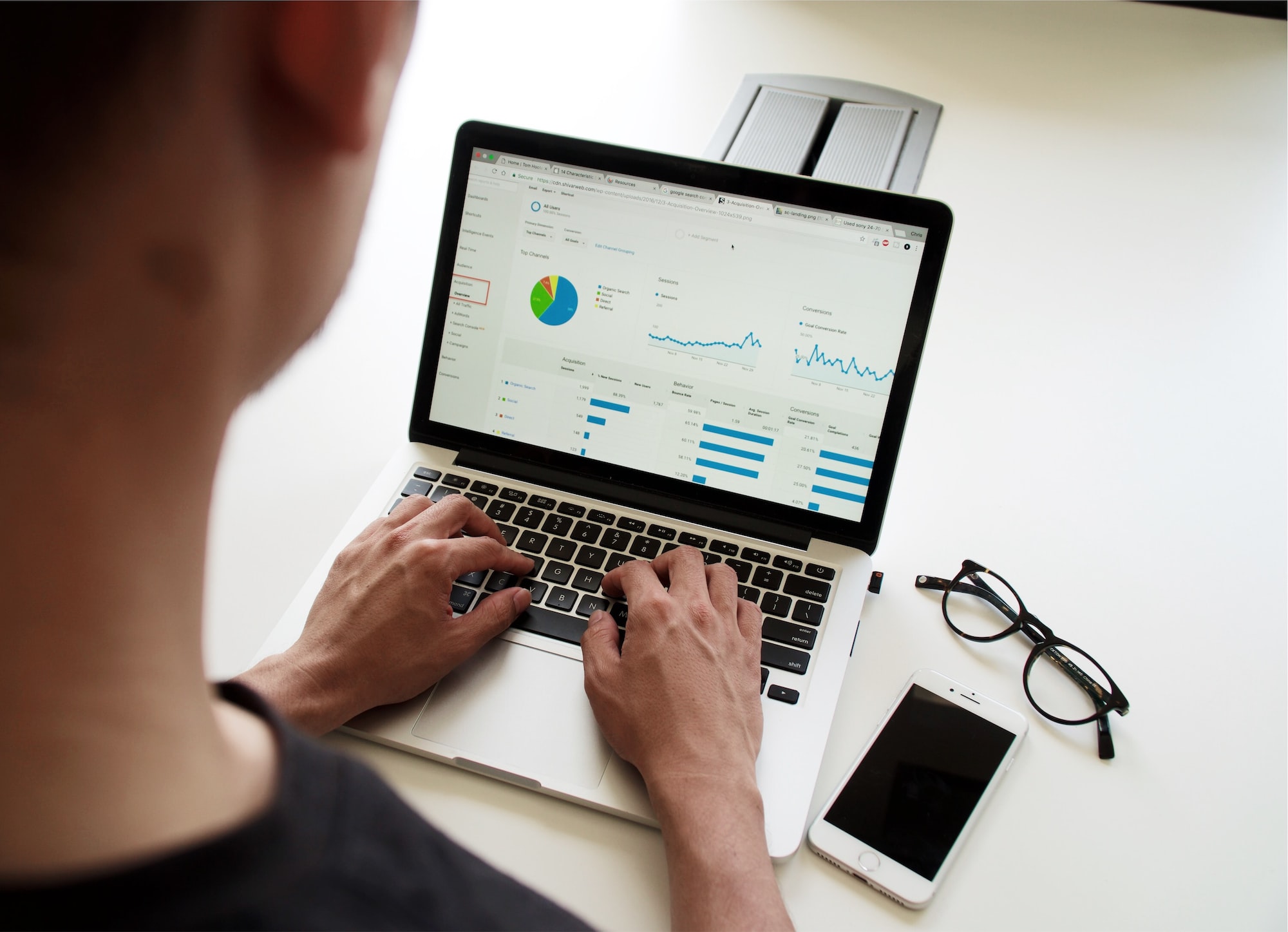Are you intrigued by the world of data and analytics? Wondering how to become a Big Data analyst and dive into this exciting field?
In today's data-driven era, understanding what is Big Data and Big Data analytics are essential.
This blog will not only unravel the mysteries of Big Data and its analytics but also guide you through the fascinating journey of stepping into the shoes of a Big Data analyst.
We'll explore the role and responsibilities that come with this dynamic profession, helping you embark on a path that combines technology, problem-solving, and the power to extract meaningful insights from vast oceans of data.
- What is Big Data?
- What is Big Data Analytics?
- Big Data Analyst Role & Responsibilities
- Roadmap on how to become a Big Data Analyst
- Obtain a Bachelor's Degree (Optional but Recommended)
- Develop Strong Fundamentals
- Specialize in Big Data Technologies
- Pursue Relevant Certifications (Optional but Beneficial)
- Gain Practical Experience
- Learn Machine Learning and Data Science (Optional)
- Develop Soft Skills
- Stay Current
- Network and Build a Professional Brand
- Apply for Big Data Analyst Roles
- Advance Your Career
What is Big Data?
Big data is a term that describes large and complex data sets that are difficult to process using traditional data processing applications.
Big data is typically characterized by the three Vs:
- Volume: Big data sets are often very large, containing petabytes or even exabytes of data.
- Velocity: Big data is often generated and processed in real-time, or at least very quickly.
- Variety: Big data can come from a wide variety of sources, including structured (e.g., databases), semi-structured (e.g., log files), and unstructured (e.g., social media posts) data.
Big data is becoming increasingly important as businesses and organizations collect more and more data from a variety of sources.
By analyzing big data, businesses can gain insights into their customers, operations, and markets that would be impossible to obtain from traditional data sources alone.
Here are some examples of Big data:
- Web analytics data: Data collected from websites and apps, such as page views, clicks, and user demographics.
- Social media data: Data collected from social media platforms, such as posts, comments, and likes.
- Sensor data: Data collected from sensors, such as temperature, humidity, and traffic patterns.
- Machine-generated data: Data generated by machines, such as log files and transaction records.
- Internet of Things (IoT) data: Data collected from connected devices, such as smart thermostats, wearables, and industrial equipment.
Big data can be used for a variety of purposes, including:
- Customer segmentation and targeting: Businesses can use big data to segment their customers into different groups and target them with personalized marketing campaigns.
- Fraud detection: Big data can be used to detect and prevent fraud, such as credit card fraud and insurance fraud.
- Risk assessment: Big data can be used to assess risk in a variety of areas, such as financial risk and operational risk.
- Product development: Big data can be used to develop new products and services that meet the needs of customers.
- Scientific research: Big data can be used to conduct scientific research in a variety of fields, such as medicine, climate change, and economics.
Big data is a powerful tool that can be used to improve decision-making, streamline operations, and create new opportunities.
However, it is important to note that big data also presents some challenges, such as privacy concerns and the need for specialized skills and technologies to manage and analyze large data sets.
What is Big Data Analytics?
Big data analytics is the process of collecting, examining, and analyzing large amounts of data to uncover hidden patterns, correlations, and insights.
This information can then be used to make better business decisions, improve operational efficiency, and develop new products and services.
Big data analytics is typically performed using a variety of tools and technologies, including:
- Data warehouses: Data warehouses are central repositories that store large amounts of data from a variety of sources.
- Data lakes: Data lakes are like data warehouses, but they can store both structured and unstructured data.
- Big data processing frameworks: Big data processing frameworks, such as Apache Hadoop and Apache Spark, are used to process and analyze large data sets.
- Machine learning algorithms: Machine learning algorithms are used to identify patterns and correlations in data.
It is used by a wide variety of industries, including:
- Retail: Retailers use big data analytics to understand customer behavior, optimize product placement, and improve marketing campaigns.
- Finance: Financial institutions use big data analytics to detect fraud, assess risk, and make investment decisions.
- Healthcare: Healthcare organizations use big data analytics to improve patient care, conduct clinical research, and develop new drugs and treatments.
- Manufacturing: Manufacturers use big data analytics to optimize production processes, improve quality control, and predict demand.
Here are some examples of how big data analytics is being used in the real world:
- Netflix uses big data analytics to recommend movies and TV shows to its users.
- Amazon uses big data analytics to personalize product recommendations and optimize its supply chain.
- Walmart uses big data analytics to predict customer demand and optimize its inventory levels.
- Target uses big data analytics to send personalized coupons and promotions to its customers.
- The US government uses big data analytics to detect fraud and terrorism.
Big data analytics is a powerful tool that can be used to improve decision-making and operations in a wide variety of industries.
However, it is important to note that big data analytics also presents some challenges, such as privacy concerns and the need for specialized skills and technologies.
Big data analytics can offer several benefits to businesses and organizations, including:
- Improved decision-making: Big data analytics can help businesses make better decisions by providing them with insights into their customers, operations, and markets.
- Increased efficiency: Big data analytics can help businesses streamline their operations and improve efficiency by identifying areas where waste and inefficiency can be reduced.
- Reduced costs: Big data analytics can help businesses reduce costs by helping them optimize their supply chain, reduce fraud, and improve customer retention.
- New product and service development: Big data analytics can help businesses develop new products and services that meet the needs of their customers.
- Competitive advantage: Big data analytics can give businesses a competitive advantage by helping them to better understand their customers and markets, and to make better decisions than their competitors.
Big Data Analyst Role & Responsibilities
A Big Data analyst plays a crucial role in an organization's data strategy, helping to extract valuable insights from large and complex datasets.
Their responsibilities encompass a wide range of tasks related to data collection, processing, analysis, and interpretation. Here are the key roles and responsibilities of a Big Data analyst:
Data Collection and Preparation
- Data Ingestion: Collect and import large datasets from various sources, which may include databases, logs, sensors, social media, and more.
- Data Cleaning: Cleanse and preprocess data to remove inconsistencies, missing values, and errors that can affect the quality of analysis.
Data Analysis
- Exploratory Data Analysis (EDA): Perform EDA to understand the dataset's characteristics, and identify trends, anomalies, and outliers.
- Statistical Analysis: Apply statistical techniques to derive meaningful insights from the data.
- Data Visualization: Create visualizations (e.g., charts, graphs, dashboards) to communicate findings effectively.
Data Transformation
- Data Transformation: Transform and reshape data as needed for analysis or use in machine learning models.
- Feature Engineering: Create new features or variables that may improve the predictive power of models.
Machine Learning
- Model Building: Develop and train machine learning models to solve specific business problems or make predictions.
- Model Evaluation: Assess the performance of models using various metrics and fine-tune them as necessary.
Big Data Technologies
- Hadoop and Spark: Utilize distributed computing frameworks like Hadoop and Spark for processing large datasets efficiently.
- NoSQL Databases: Work with NoSQL databases (e.g., MongoDB, Cassandra) to store and retrieve unstructured or semi-structured data.
Programming and Scripting
- Programming Languages: Use programming languages such as Python, R, or Java for data analysis and scripting tasks.
- SQL: Write complex SQL queries to extract and manipulate data from relational databases.
Data Security and Privacy
- Data Governance: Ensure compliance with data security and privacy regulations (e.g., GDPR, HIPAA) when handling sensitive data.
- Anonymization: Implement techniques to anonymize or de-identify data when necessary.
Communication
- Report Generation: Prepare detailed reports and presentations summarizing findings and insights for stakeholders.
- Collaboration: Collaborate with cross-functional teams, including data engineers, data scientists, and business analysts.
Continuous Learning
- Stay Updated: Keep up with the latest developments in Big Data technologies, tools, and analytical techniques.
- Skill Enhancement: Continuously improve skills in data analysis, statistics, and machine learning.
Problem-Solving
- Identify Business Problems: Work with business stakeholders to define analytical problems and develop data-driven solutions.
- Optimization: Optimize processes and analyses to improve efficiency and effectiveness.
Project Management
- Project Planning: Plan and manage Big Data projects, including setting goals, timelines, and priorities.
- Resource Allocation: Allocate resources effectively to ensure project success.
Ethical Considerations
- Ethical Data Handling: Ensure ethical data practices, including responsible data usage and minimizing bias in analysis.
In summary, a Big Data analyst plays a multifaceted role that involves working with large and diverse datasets, applying data analysis techniques, using advanced technologies, and communicating insights to support data-driven decision-making within an organization.
They are essential in helping businesses extract actionable information from the vast amounts of data available in today's data-rich environment.
Roadmap on how to become a Big Data Analyst
Becoming a Big Data analyst typically requires a combination of education, technical skills, and practical experience.
Here's an education roadmap to help you pursue a career in this field:
Obtain a Bachelor's Degree (Optional but Recommended)
- Bachelor's in Computer Science, Statistics, or a Related Field: While not always mandatory, having a bachelor's degree in a relevant field can provide a strong foundation in mathematics, programming, and data analysis.
Develop Strong Fundamentals
- Programming Skills: Learn programming languages commonly used in data analysis, such as Python and R.
- Statistics and Mathematics: Study statistics and linear algebra to understand data modeling and analysis concepts.
- Database Management: Gain proficiency in SQL and database management systems (e.g., MySQL, PostgreSQL).
- Data Visualization: Familiarize yourself with data visualization tools like Tableau or libraries like Matplotlib and Seaborn in Python.
Specialize in Big Data Technologies
- Hadoop and Spark: Acquire expertise in distributed computing frameworks like Apache Hadoop and Apache Spark, which are crucial for processing and analyzing large datasets.
- NoSQL Databases: Learn about NoSQL databases (e.g., MongoDB, Cassandra) used to store and manage unstructured data.
Pursue Relevant Certifications (Optional but Beneficial)
- Consider earning certifications that demonstrate your skills and knowledge in Big Data technologies. Some popular certifications include:
- Cloudera Certified Data Analyst (CCA Data Analyst)
- Databricks Certified Associate Developer for Apache Spark
- AWS Certified Data Analytics - Specialty
Gain Practical Experience
- Internships: Seek internships or entry-level positions in data analysis or related roles to gain hands-on experience.
- Personal Projects: Work on personal or open-source data analysis projects to build a portfolio that showcases your skills.
Learn Machine Learning and Data Science (Optional)
Understanding machine learning concepts and data science techniques can enhance your capabilities as a Big Data analyst and open more career opportunities.
Develop Soft Skills
- Effective Communication: Improve your ability to convey complex data insights to non-technical stakeholders.
- Problem-Solving: Hone your problem-solving skills to tackle data-related challenges effectively.
- Collaboration: Work well in cross-functional teams and collaborate with data engineers, data scientists, and business analysts.
Stay Current
Continuously update your knowledge and skills as Big Data technologies evolve. Follow industry trends and attend conferences, webinars, and workshops.
Network and Build a Professional Brand
Connect with professionals in the field through networking events, LinkedIn, and online communities. Building a strong professional network can help you discover job opportunities and stay informed.
Apply for Big Data Analyst Roles
Search for job openings and apply for Big Data analyst positions in various industries, such as finance, healthcare, e-commerce, and technology.
Advance Your Career
As you gain experience, consider pursuing more senior roles such as Senior Data Analyst, Data Scientist, or Data Engineer, depending on your interests and career goals.
Remember that the path to becoming a Big Data analyst may vary based on individual circumstances and career goals. Continuous learning and adaptability are key in this rapidly evolving field.
By following this roadmap and staying committed to improving your skills, you can build a successful career as a Big Data analyst.
FAQs
1. What is Big Data, and why is it important for a Big Data analyst?
Big Data refers to vast and complex datasets that require specialized tools and techniques for analysis. As a Big Data analyst, understanding Big Data is crucial because it's the raw material you'll work with to extract insights and drive decision-making in various industries.
2. What is the difference between Big Data and Big Data Analytics?
Big Data refers to the large volume of data, while Big Data Analytics involves the processes and tools used to extract valuable insights from that data. As a Big Data analyst, you'll be focused on the analytics aspect, applying techniques to make sense of massive datasets.
3. What are the typical roles and responsibilities of a Big Data analyst?
Big Data analysts are responsible for collecting, cleaning, analyzing, and visualizing large datasets. They build and train machine learning models, create data-driven reports, and collaborate with teams to make data-informed decisions. Their role involves a diverse set of tasks to harness the power of data.
4. What skills and qualifications are required to become a Big Data analyst?
To become a Big Data analyst, you should have strong programming skills (e.g., Python, R), proficiency in SQL, knowledge of Big Data technologies (Hadoop, Spark), and a background in statistics or a related field. While a bachelor's degree is beneficial, practical experience and certifications can also be valuable.
5. What career opportunities can I explore as a Big Data analyst?
Big Data analysts are in high demand across industries like finance, healthcare, e-commerce, and technology. With experience, you can advance to roles such as Senior Data Analyst, Data Scientist, or Data Engineer. Your expertise in data analysis will open doors to exciting and well-compensated career paths.








